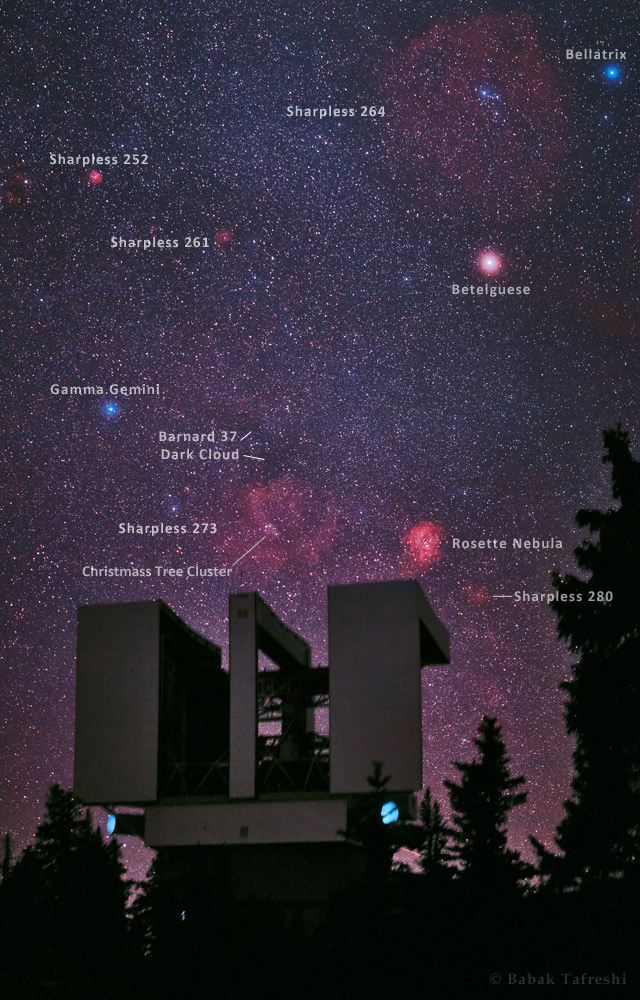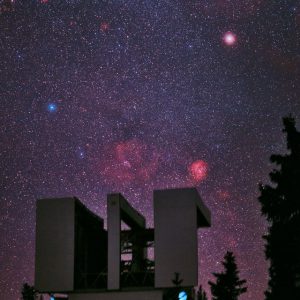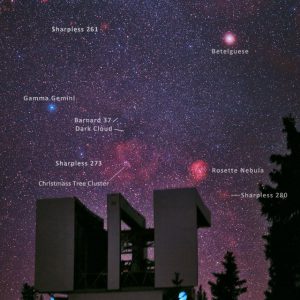Exploring the Universe
Description
Stars and nebulae of constellations Orion and Monoceros are photographed above the Large Binocular Telescope (LBT) on Mt. Graham in the southern Arizona, United States. The giant observatory combines two side-by-side 8-meter telescopes, make it one of the world’s largest telescopes. In resolution the two mirrors are equal to a single 23-meter mirror. Red emission nebula known as the Rosette is the brightest cosmic cloud in this image, appearing at upper right of the observatory. Under dark skies the Rosette Nebula is bright enough to be glimpsed even with a good size binocular or a small telescope using a wide-field eyepiece. However we can’t see the color because human eyes are color blind when looking at very faint objects. With apparent diameter of 1.3 degrees the nebula is 2.5 times wider than the Moon disc. But considering Rosette distance of over 5000 light years in fact it is 65 Light Years wide, 200 billion times wider than the Moon! Other large but faint emission nebulae appear in this view including the cloud in the “head” of Orion, the Hunter (at the upper right, above bright red star Betelgeuse). Move the slider on the image to recognize the nebulae and bright stars in the view. This image is not a composite or a photomontage. It is a real single exposure image using a modified DSLR camera, a fast lens, and a tracking mount.




comments (0)